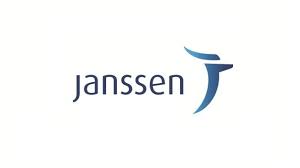Article
Guselkumab Ranked Highest Overall in Skin Clearance for Psoriatic Arthritis
Author(s):
The analysis also showed guselkumab showed positive joint efficacy among all published advanced therapies approved.

Janssen announced that a recent, comprehensive network meta-analysis on guselkumab found that the therapy ranked highest for overall level of skin clearance and showed positive joint efficacy among all published advanced therapies approved for the treatment of psoriatic arthritis.
The current analysis included data from a total of 33 phase 3 randomized clinical trials, which included 15 targeted therapies for psoriatic arthritis including interleukin (IL)-23 inhibitors such as guselkumab, risankizumab, subcutaneous tumor necrosis factor inhibitors (TNFi), and Janus kinase inhibitors (JAKi).
Several other network meta-analyses had compared the efficacy of treatments for psoriatic arthritis, but none included data from the latest phase 3 trial for guselkumab.
The COSMOS Trial
COSMOS was a multi-center, randomized, double-blind, phase 3b study which evaluated the safety and efficacy of guselkumab.
A total of 285 patients with active psoriatic arthritis and an inadequate response to TNFi therapy were enrolled in the 24-week study.
Participants were randomized 2:1 to receive guselkumab 100 mg at weeks 0, 4 and every 8 weeks thereafter or placebo.
The study contained 2 periods,including a 24-week double-blind, placebo-controlled period for the primary analysis of the efficacy and safety of the therapy compared with placebo and a 32-week active-treatment and safety follow-up period for additional analysis of the efficacy and safety of guselkumab.
Based on the data from this and other trials, Guselkumab was approved in the US for the treatment of adult patients with moderate to severe plaque psoriasis n July 2017 and in July 2020 for adults with active psoriatic arthritis, the latter of which was based on results from the DISCOVER-1 and DISCOVER-2 trials that showed guselkumab achieved the primary endpoint of ACR20 response at 24 weeks.
Network Meta-Analysis Results
The recent network meta-analysis found that guselkumab ranked first and second in PASI 90 response in patients who received doses every 4 and 8 weeks, respectively.
Results for guselkumab were also comparable to subcutaneous TNFi and most IL-17Ai, according to the ACR20 response. Both dosing regimens for guselkumab achieved improvements that were comparable to most treatments, and both doses of ranked more highly on vdH-S score than risankizumab and upadacitinib.
"This comprehensive analytical approach helps to provide a useful comparative picture of available psoriatic arthritis medicines," said Philip J. Mease, MD, Swedish Medical Center/Providence St. Joseph Health and University of Washington in Seattle, Washington. "In my experience, thorough NMAs such as this one can help equip physicians to discuss treatment choices and therapeutic outcomes with their patients in daily practice."




